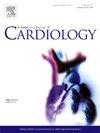Prolonged dual antiplatelet therapy strategy in acute coronary syndrome patients post-standard therapy and adverse event-free: An analysis based on OPT-CAD risk score stratification
IF 3.2
2区 医学
Q2 CARDIAC & CARDIOVASCULAR SYSTEMS
引用次数: 0
Abstract
Background
The optimal antiplatelet strategy for patients with acute coronary syndrome (ACS) after the standard 12-month dual antiplatelet therapy (DAPT) is still a matter of concern. We aimed to apply the OPT-CAD score for risk stratification and to identify those who would derive benefit from prolonged DAPT beyond 12 months.
Methods
In this post hoc analysis of OPT-CAD study, 7154 patients with ACS, who completed 12-month DAPT without any adverse events, were divided into low-risk (n = 4171) and medium-to-high-risk (n = 2983) groups based on the OPT-CAD risk score. The primary endpoint was ischemic events, defined as the composite of cardiac death, myocardial infarction (MI) or stroke occurring between 12 and 24 months. The secondary endpoints included all-cause death and Bleeding Academic Research Consortium (BARC) type 3 or 5 bleeding.
Results
After propensity score matching, in low-risk patients, ischemic events, all-cause death and BARC type 3 or 5 bleeding were comparable between prolonged DAPT and single antiplatelet therapy (SAPT) regimens. However, among the medium-to-high-risk patients, prolonged DAPT was associated with a reduction in ischemic events (hazard ratio [HR] 0.48, 95 % confidence intervals [CI] 0.29–0.81, P = 0.0062) and all-cause death (HR 0.44, 95 %CI 0.21–0.89, P = 0.0220) without apparently increasing the risk of BARC type 3 or 5 bleeding (HR 1.49, 95 %CI 0.25–8.92, P = 0.6622).
Conclusions
The OPT-CAD risk score demonstrated moderate ability to predict long-term ischemic events and all-cause mortality in patients with ACS who completed the standard 12-month DAPT without adverse events, and might help identify those more likely to derive benefit from prolonged DAPT.

急性冠状动脉综合征患者标准治疗后和无不良事件的长期双重抗血小板治疗策略:基于OPT-CAD风险评分分层的分析
背景:急性冠脉综合征(ACS)患者在标准的12个月双重抗血小板治疗(DAPT)后的最佳抗血小板策略仍然是一个值得关注的问题。我们的目的是应用OPT-CAD评分进行风险分层,并确定那些将从延长DAPT超过12 个月的患者中获益。方法:在这项OPT-CAD研究的事后分析中,7154例完成12个月DAPT且无不良事件的ACS患者,根据OPT-CAD风险评分分为低危组(n = 4171)和中危组(n = 2983)。主要终点是缺血性事件,定义为发生在12至24 个月之间的心源性死亡、心肌梗死(MI)或卒中的复合。次要终点包括全因死亡和出血,学术研究联盟(BARC) 3型或5型出血。结果:倾向评分匹配后,在低风险患者中,延长DAPT和单一抗血小板治疗(SAPT)方案之间的缺血性事件、全因死亡和BARC 3型或5型出血相当。然而,medium-to-high-risk患者中,长期榫眼与减少缺血性事件(风险比0.48 [HR], 95 %置信区间(CI) 0.29 - -0.81, P = 0.0062)和全因死亡(HR 0.44, 95 %可信区间0.21 - -0.89,P = 0.0220)没有明显增加巴克的风险类型3或5出血(HR 1.49, 95 %可信区间0.25 - -8.92,P = 0.6622)。结论:对于完成标准12个月DAPT且无不良事件的ACS患者,OPT-CAD风险评分显示出中等预测长期缺血事件和全因死亡率的能力,并且可能有助于识别那些更有可能从延长DAPT中获益的患者。
本文章由计算机程序翻译,如有差异,请以英文原文为准。
求助全文
约1分钟内获得全文
求助全文
来源期刊

International journal of cardiology
医学-心血管系统
CiteScore
6.80
自引率
5.70%
发文量
758
审稿时长
44 days
期刊介绍:
The International Journal of Cardiology is devoted to cardiology in the broadest sense. Both basic research and clinical papers can be submitted. The journal serves the interest of both practicing clinicians and researchers.
In addition to original papers, we are launching a range of new manuscript types, including Consensus and Position Papers, Systematic Reviews, Meta-analyses, and Short communications. Case reports are no longer acceptable. Controversial techniques, issues on health policy and social medicine are discussed and serve as useful tools for encouraging debate.
 求助内容:
求助内容: 应助结果提醒方式:
应助结果提醒方式:


